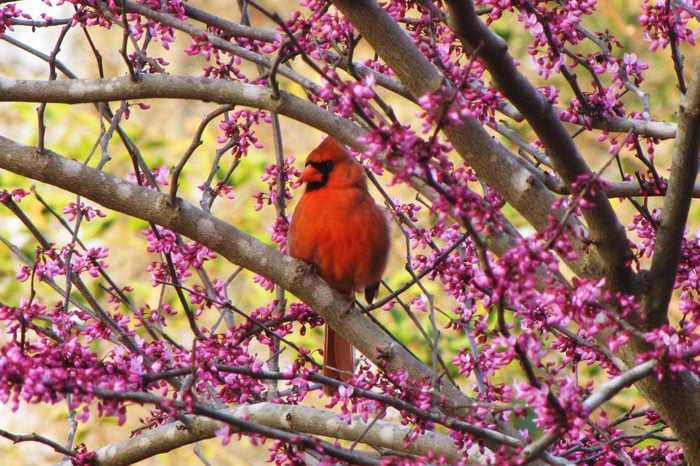
Eastern Redbud
Eastern redbud is a small native tree found in USDA Plant Hardiness Zones 4 through 8. Redbuds generally grow to about 20 feet tall and 30 to 35 feet wide at the top. They bloom in early spring before the leaves come out.
Depending on the variety, flower colors vary from pink to dark pink to almost red. Redbuds often grow along the edge of wooded areas in part to full sun and well-drained soil.
Available varieties include ‘Appalachian Red,’ which has dark pink, almost red flowers; ‘Forest Pansy,’ with purple foliage; and ‘Ruby Falls,’ with purple foliage and a weeping form. ‘Ruby Falls’ will be much smaller.
While the redbud puts on a big flower show in the spring, it will sometimes show puckered edges on the leaves if herbicides are sprayed nearby. Redbuds are also considered a short-lived tree. Many die back after about 20 years.
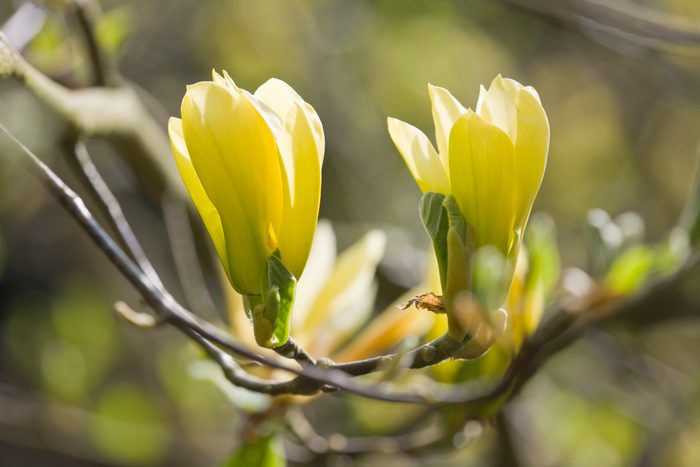
Magnolia
Most everyone is familiar with magnolia trees with white or pink blooms. Dozens of varieties are available, including hybrids with distinctive colors. One is Magnolia ‘Butterflies,’ hardy in USDA Zones 5 through 9 with buttery yellow flowers in early spring. It grows to about 15 feet tall and wide, and does best in well-drained soil in full to part shade. The blooms come out well before the foliage.
If you prefer the classic white or pink flowers, look for named varieties such as ‘Jane’ which has reddish pink flowers. It’s hardier and would also do well in Zone 4.
To be sure you’re getting the color you want, purchase your tree in early spring, when it should be blooming at the garden center.
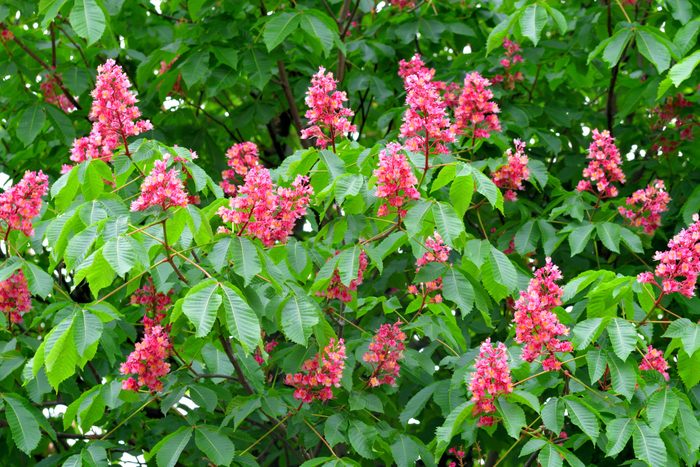
Red Horse Chestnut
If you see a fully-mature red horse chestnut in bloom, you’re unlikely to forget it. It grows up to 30 to 40 feet, and in mid-spring will be covered with clusters of reddish pink flowers. Hardy in Zones 4 through 8, it’s related to the native Ohio buckeye tree, which has greenish white flowers. But it is not native.
Be aware this tree produce nuts, create extra clean-up work. The nuts are poisonous to humans but enjoyed by squirrels.
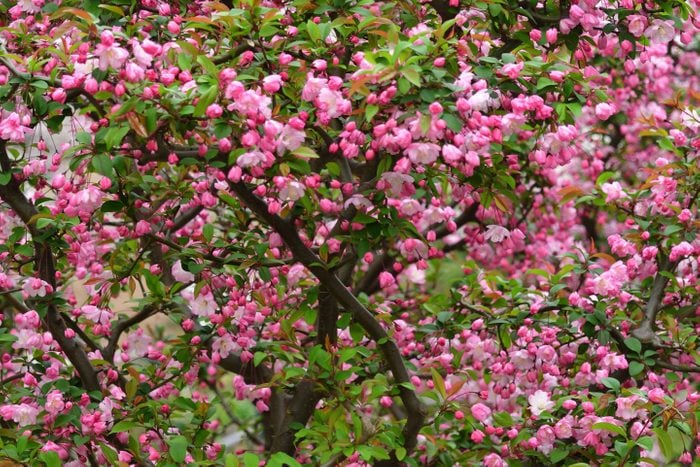
Crabapples
Crabapple trees tend to go in and out of favor, and many are prone to the same diseases as apple trees. But with a little searching, you can find kinds resistant to many of those diseases.
Most crabapple trees are hardy in Zones 4 through 8 and prefer a sunny location. Mature sizes vary on the variety, so check the label. Some, like Hall’s crabapple, have dark pink buds that open to reveal a softer pink bloom.
Like apple trees, crabapple trees benefit from pruning to allow more air flow through the branches. They also produce small crabapples, which are edible but really sour.
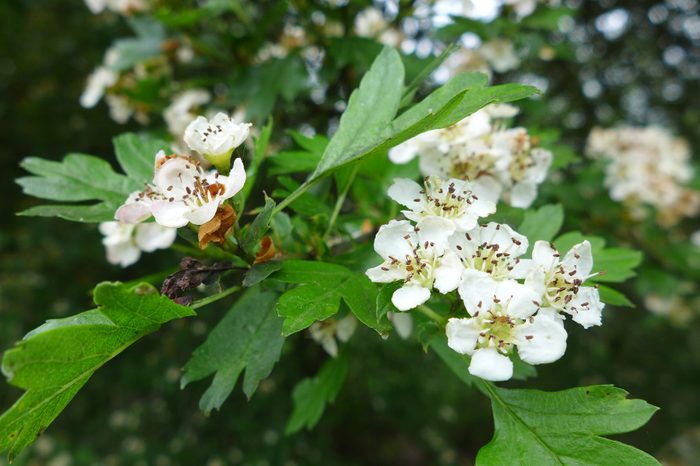
Washington Hawthorn
This hawthorn, native across the eastern United States, features white blooms in the spring and red fruit in the fall. Birds love the fruit. Generally, this hawthorn grows to about 25 feet tall and is hardy in Zones 3 through 8. It prefers sunny to part-shade and well-drained soil, but can tolerate other soils.
What’s the downside? Long sharp thorns and a susceptibility to a disease called cedar-rust. Avoid planting it in the Western U.S. where it could become invasive, competing with native trees.
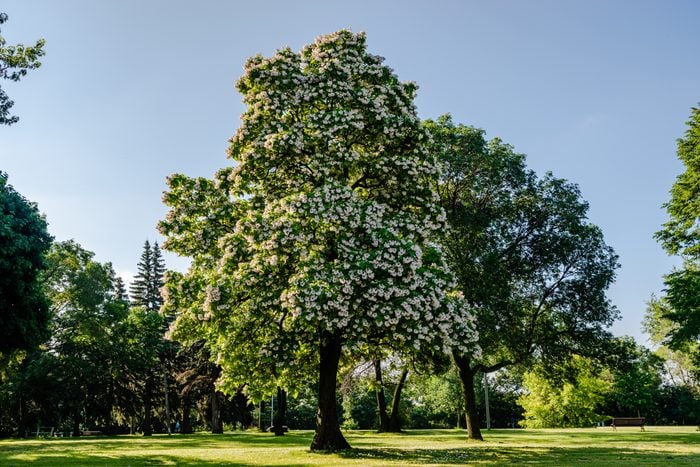
Catalpa
Many people have seen large catalpa trees blooming in late spring. Once popular, these have fallen out of favor due to their size — they can grow 50 feet or taller — and the mess their large leaves and seed pods create. But in a big yard, they may be just the right flowering tree. In late spring, catalpas produce white flowers that, form a distance, resemble oversized popcorn.
There are two types. The northern catalpa is hardy in Zones 4 to 8, and the southern catalpa in Zones 5 through 9.
Both trees are native to parts of the U.S. and are occasionally attacked by the larva of the catalpa sphinx moth, commonly called catalpa worms. If you like to fish, pick off these worms and use them for bait.
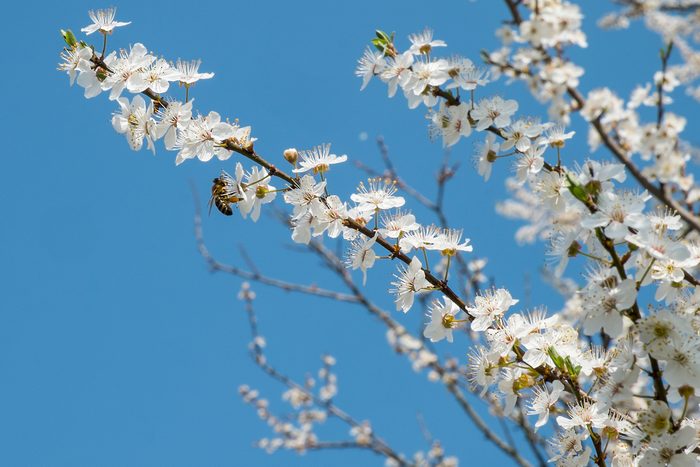
Serviceberry
Also called shadberry, shadblow or juneberry, there are several types. All are flowering trees native to the U.S. These trees often have multiple trunks and may only grow from 10 to 25 feet tall, so they’re good for smaller yards.
Serviceberries are hardy in Zones 4 through 9. The white blooms come out early in the spring, followed by edible fruit, which birds quickly eat.
One of the most popular varieties is a hybrid, Amelanchier laevis, a cross between two other serviceberries.
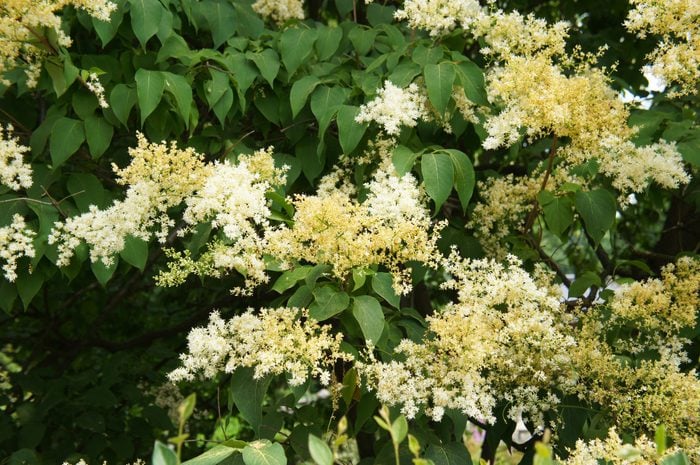
Japanese Tree Lilac
The Japanese tree lilac is another good flowering tree choice for smaller yards if you’re looking for one that will bloom later in the spring. Most are grown as single-trunk trees, but you can occasionally find them with multiple trunks. Hardy in Zones 3 through 7, they prefer full sun.
The flowers are fragrant, just like lilacs, and attract many pollinators. The tree grows slowly and will eventually be 20 to 30 feet tall and wide. They’re rarely bothered by insect or disease problems. In my garden, the leaves come out early and are sometimes hit with a late frost, which causes minor damage the tree eventually outgrows.
This is not a native tree but isn’t known to be invasive.
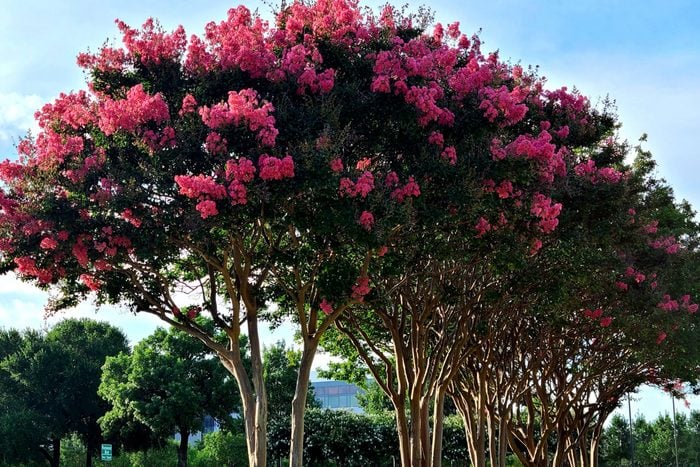
Crepe Myrtle
If you garden in the South, you’re probably familiar with crepe myrtles, which grow as multi-trunk trees. Some reach 20 feet tall but many are much shorter, especially if pruned. These flowering trees, hardy in Zones 6 through10, bloom in mid-summer. Flower colors range from white through all the pinks to red to purple.
In colder areas of Zone 6, crepe myrtles are often grown as shrubs. They may actually die back to the ground in winter but will grow back from the roots.
Crepe myrtles prefer full sun and well-drained soil. They’re generally easy to care for but may occasionally be attacked by powdery mildew.
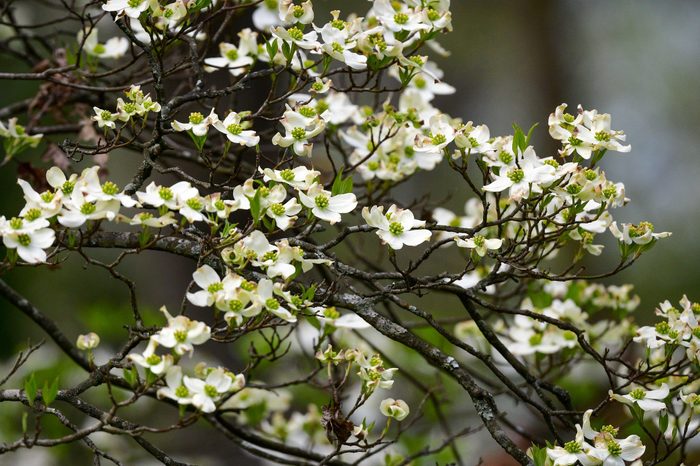
Flowering Dogwood
Dogwood is a beautiful flowering tree native to the Eastern U.S.. Hardy in Zones 5 through 9, it grows 15 to 30 feet tall. Depending on where you. live, the flowering dogwood will be in full bloom sometime from April through early May.
Like other dogwoods, it’s commonly found on the edges of wooded areas and prefers part shade to full sun. In warmer climates, it will do better in part shade.
Many named varieties offer superior form and larger flowers. ‘Cherokee Princess’ has larger blooms and resists anthracnose, which can be a problem in some areas. If you want a pink flowering dogwood, look for a variety like ‘Rubra’ or ‘Sweetwater Red.’
